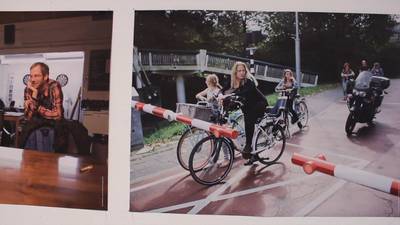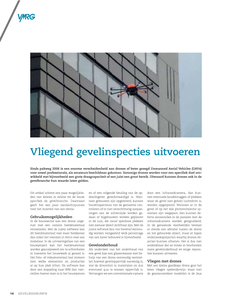The fifth book in the Ebifananyi series is based on the memoirs and slide collection of Engineer Martin Wangutusi Wambwa (b. 1928). He is one of the first western trained Ugandan engineers. Journalism and photography would have been his second vocational choice, had his engineering ambitions not worked out.Uhuru (Swahili for freedom/independence) works towards and around the idea of Uganda’s independence. Wambwa’s slides show a (literally and figuratively speaking) colourful, clean and optimistic place. His memoirs take us through what it meant and took for him to be educated the way he was, leading to a climax in which things started to change from ‘Uhuru na kazi’ (Freedom and Work) to ‘Uhuru na vita’ (Freedom and War).Three contemporary photographers were invited to engage with and respond to Wambwa’s photographs. Elsadig Mohamed (SD), Luuk van den Berg (NL) and Rumanzi Canon (UG) did this with each a different visual strategy related to their own practices as photographers.The work presented in this book was part of the City Remixing exhibitions that took place in Uganda (March 2016) and The Netherlands (April 2016). Video documentation of the shows is also available: NL, and UG.
DOCUMENT
Bespreking van onderzoek van Rychard Bouwens in ‘Waar wij trots op zijn. De ontdekkingen van 2011’ van de Universiteit Leiden Faculteit der Wiskunde & Natuurwetenschappen. Het valt goed te begrijpen voor iedereen met een basale kennis van klassieke fotografie: bij weinig licht neem je een lange sluitertijd. En dat is wat Rychard Bouwens deed. Om naar de zogenaamde Dark Ages van het heelal te kijken, hield hij de Hubble-ruimtetelescoop maar liefst 87 uur lang op een plek gericht.
DOCUMENT

Module A: Communicatietheorie en Semiotiek Module B: Technische mogelijkheden tot beinvloeding betekenisverlening mbv fotografie (Enkele Beeld) Module C: idem mbt Bewegend Beeld en Beeldnarratie, inclusief enkele productiestappen
DOCUMENT
Anders belichtIn het project Anders belicht werkte het lectoraat Image in Context in ’t Blauwbörgje zorginstelling voor mensen met dementie. Fotografie is ingezet als een methode voor gezamenlijk onderzoek naar de relatie tussen bewoners en hun leefomgeving. Beeldend kunstenaar en fotografie-docent Harold Koopmans begeleidde een groep onderzoekers, bestaande uit studenten van Academie Minerva en personeelsleden van ’t Blauwbörgje. Hij leerde ze om de fotowandeling, ontwikkeld door beeldend kunstenaar en sociologe Lino Hellings binnen het onderzoek toe te passen. Lino Hellings ontwikkelde deze 'open blik'-methode voor de openbare ruimte. Het lectoraat Image in Context hevelde deze fotografische methode over naar de context van een zorginstelling.Door de methode ervaren de onderzoekers hoe ze zelf mogen kijken, hoe ze opnieuw kunnen kijken en hoe ze daarmee een andere visie ontwikkelen op de omgeving. Ze delen dit tijdens de overdracht met het management en de andere personeelsleden. Anders Belicht heeft drie keer plaatsgevonden. In de derde editie bleef het niet bij het observeren, reflecteren en delen, maar is er een stap gezet richting het vertalen van de inzichten naar verbetervoorstellen. Deze laatste editie resulteerde in prototypen van producten, die tot doel hebben een positieve verandering te brengen in deze sociale context.Op dit moment werkt het lectoraat samen met beeldend kunstenaar en onderzoekster Swanhilde de Jong aan een werkwijze waarin - via fotografie als middel - wordt gezocht naar de wijze waarop mensen met dementie centraal kunnen staan in het onderzoek naar hun omgeving.
LINK

Een begeleidende tekst bij de publicatie 'Beelden van Buiten, Academie Minerva in het UMCG'. Tentoonstelling en publicatie van Academie Minerva, Projectbureau/AMP.Studenten van Minerva werden door het European Research Institute for the Biology of Ageing (ERIBA) in de gelegenheid gesteld door middel van fotografie onderzoek te doen gerelateerd aan veroudering.
DOCUMENT
Het lectoraat Image in Context van het Kenniscentrum Kunst en Samenleving heeft enkele jaren geleden een expertisecentrum opgezet om licht te werpen op de wijzen waarop fotografie (lens based images) wordt ingezet als vorm van artistiek onderzoek dat helpt ons te situeren in de wereld. Dit expertisecentrum heet Priccapractice, Photographic Research in a Crosscultural and Crossdisciplinary Artistic Practice. Het richt zich op fotografie als onderzoekende praktijk in plaats van als representerende praktijk, als een co-creërende praktijk van kunstenaar/fotograaf in een crossculturele wereld in plaats van als de autonome praktijk van een enkele kunstenaar. Daarnaast heeft het aandacht voor fotografie als een zich ontwikkelende praktijk binnen de voortschrijdende informatietechnologische mogelijkheden die andere vormen van maken, distribueren en exposeren mogelijk maakt. De focus van het expertisecentrum is uniek binnen Nederland, en waarschijnlijk zelfs binnen Europa. Het expertisecentrum kent een redactie bestaande uit de lector Image in Context dr. Anke Coumans, gepromoveerd op het dialogische karakter van het fotografische beeld als publiek beeld, fotografe/PhD onderzoeker Andrea Stultiens promotieonderzoeker met als specialiteit de fotografische representatie van en in Afrika in het algemeen en Oeganda in het bijzonder, de media kunstenaar en onderzoeker Adri Schokker en de kunstenaar fotograaf Rein Jelle Terpstra die steeds nieuwe wijzen ontdekt om concepten in fotografie te vertalen. Allen zijn verbonden aan het lectoraat Image in Context van Academie Minerva en als docent werkzaam binnen de Hanze Hogeschool.Het expertisecentrum ontwikkelt eigen projecten in Nederland en samenwerkingsprojecten met buitenlandse instituten. Via de website www.priccapractice.nl wordt aan een netwerk gewerkt en worden interessante praktijken van fotografen en kunstenaars vanuit de hele wereld zichtbaar gemaakt. Twee keer per jaar wordt er een combinatie gemaakt tussen een expositie en een expertmeeting vanuit een door de redactie gekozen thema. Vaak worden hier studentenprojecten aangekoppeld waarin samen wordt gewerkt met instanties of doelgroepen in de samenleving . We hebben van binnen naar buiten gewerkt, door eerst de community van Academie Minerva, haar allumni en de Groningse kunstwereld aan ons te binden om deze vervolgens te verbinden met de rest van de wereld. Er hebben daarvoor reeds drie exposities en expertmeetings plaatsgevonden waaraan fotografen en beeldend kunstenaars als Roy Villevoy, Ahmet Polat, Lino Hellings en Martin Brandsma hebben deelgenomen. De exposities en de expertmeetings vinden plaats binnen Academie Minerva, locatie Praediniussingel en zijn openbaar.
DOCUMENT
Verslag van het jaarlijkse NOP20x20 (NOP staat voor Nijmeegs Ontwerp Platform), 16 januari 2014. Hier presenteerden elf sprekers uit Nijmegen en omgeving aan de hand van 20 dia's van 20 seconden hun creatieve ideeën. De sprekers waren afkomstig uit de meest uiteenlopende en soms ook verrassende disciplines als kunst, grafisch ontwerp, illustratie, fotografie en muziek, maar ook eten en zelfs bier! Kun je hier creatief mee zijn dan? Ja dus!
DOCUMENT
Sinds pakweg 2006 is een enorme verscheidenheid aan drones of beter gezegd Unmanned Aerial Vehicles (UAVs) voor zowel professionals, als amateurs beschikbaar gekomen. Sommige drones worden voor specifiek doe ontwikkeld met bijvoorbeeld een grote draagcappaciteit of juist een groot bereik. Uiteraard kunnen drones ook in de gevelbranche hun waarde laten gelden. In: Gevelbouw, ISSN 1572-1310, jaargang 15, nr. 1, p. 14-15
MULTIFILE
